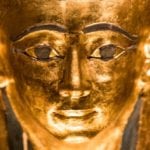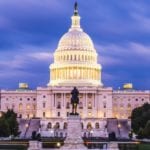 Music
Music  Music
Music  History
History 10 Less Than Jolly Events That Occurred on December 25
 Weird Stuff
Weird Stuff 10 Funny Ways That Researchers Overthink Christmas
 Politics
Politics 10 Political Scandals That Sent Crowds Into the Streets
 Weird Stuff
Weird Stuff Ten Bizarre Facts About The Doge Meme
 Our World
Our World 10 Ways Your Christmas Tree Is More Lit Than You Think
 Movies and TV
Movies and TV The 10 Coolest Stars to Set Sail on The Love Boat
 History
History 10 Things You Didn’t Know About the American National Anthem
 Technology
Technology Top 10 Everyday Tech Buzzwords That Hide a Darker Past
 Humans
Humans 10 Everyday Human Behaviors That Are Actually Survival Instincts
 Music
Music 10 Surprising Origin Stories of Your Favorite Holiday Songs
 History
History 10 Less Than Jolly Events That Occurred on December 25
 Weird Stuff
Weird Stuff 10 Funny Ways That Researchers Overthink Christmas
Who's Behind Listverse?

Jamie Frater
Head Editor
Jamie founded Listverse due to an insatiable desire to share fascinating, obscure, and bizarre facts. He has been a guest speaker on numerous national radio and television stations and is a five time published author.
More About Us Politics
Politics 10 Political Scandals That Sent Crowds Into the Streets
 Weird Stuff
Weird Stuff Ten Bizarre Facts About The Doge Meme
 Our World
Our World 10 Ways Your Christmas Tree Is More Lit Than You Think
 Movies and TV
Movies and TV The 10 Coolest Stars to Set Sail on The Love Boat
 History
History 10 Things You Didn’t Know About the American National Anthem
 Technology
Technology Top 10 Everyday Tech Buzzwords That Hide a Darker Past
 Humans
Humans 10 Everyday Human Behaviors That Are Actually Survival Instincts
10 Wild Facts You Didn’t Know About Las Vegas
How much do you know about Las Vegas? Sure, it’s renowned the world over as a gambling and party destination. But what about the clandestine flights to a top secret government facility, a book that legally bans people from even entering a casino, and an ugly history of segregation? Below are some unusual facts most people don’t know about Sin City.
10Drinking In Public
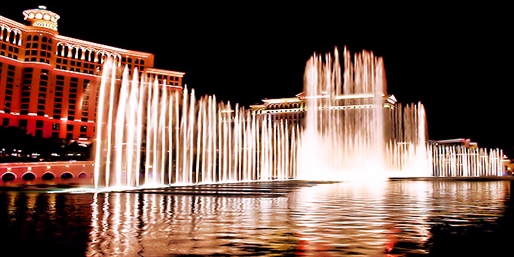
In basically every movie featuring Las Vegas, there is a copious amount of drinking while in public. But is that just a liberty taken in the movies or can you actually live the dream and wander around drink in hand?
It turns out that the answer is yes—but, as with most legal issues, there are some exceptions to keep in mind. Within the city limits you are allowed to have an open container in public as long as the establishment where you bought your drink allowed you to leave the premises with it and your beverage is not in a metal or glass container—so no beer cans. And watch where you wander with your drink, since if you have it within 1,000 feet of a school, place of worship, or hospital you will be risking an unplanned tour of the Clark County Detention Center.
9Prostitution Is Not Legal In Las Vegas
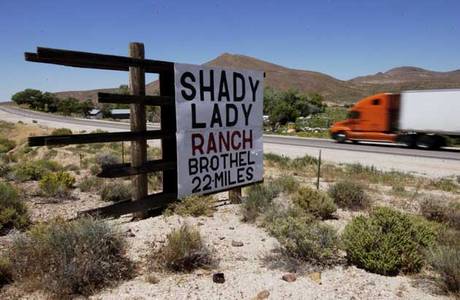
This one has been a source of confusion among tourists for a long time. One of the things for which Nevada is known, for better or worse, is being the only state that permits legal prostitution. But the law only allows prostitution in counties with a population of less than 400,000 people. Why is that particular number the cutoff? Because when the law was enacted, Las Vegas wanted to keep the brothels out of Clark County, where the city is located. At the time Clark County was the only county with a population over 400,000, though today Reno’s population also prevents it from legalizing prostitution.
So why did a city that made its official advertising slogan “What happens in Vegas stays in Vegas” work so hard to keep out legal prostitution? Like many small western towns, Las Vegas had tolerated the presence of brothels since its founding. But as the city began to evolve into a national tourist destination it cracked down on open prostitution, in an effort to avoid scaring off visitors from more puritan parts of the country. That is not to say that illicit prostitution doesn’t exist in Las Vegas, as the hundreds of pages for “escorts” in the local phone book will attest, but the Las Vegas police regularly conduct stings to catch prostitutes and their johns.
So while sex workers in Nevada’s rural counties ply their trade at brothels regulated by the local health department and undergo legally mandated monthly STD screenings, Las Vegas has steadfastly rejected efforts to create a legal red light district, despite the city’s continuing problems with underage prostitution and human trafficking. Nevada’s legal prostitution industry certainly has its problems, but given that selling sex is unlikely to go out of fashion anytime soon, regulation may be the best solution.
8Janet Airlines
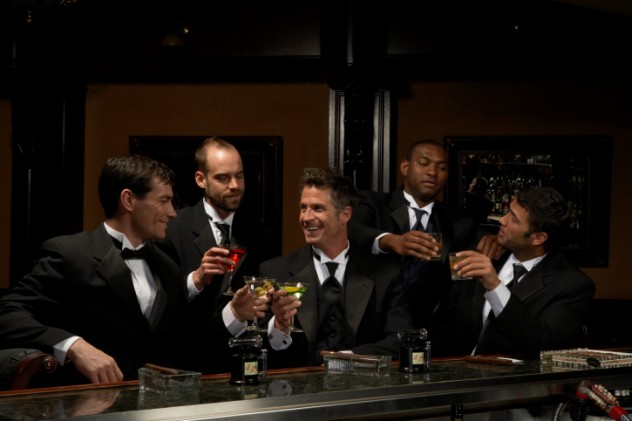
Nevada is home to one of America’s most secretive military facilities, the classified base known as Area 51. Located in a dry lake bed in central Nevada, the government refused to even acknowledge Area 51’s existence until this year, and the base has been rumored to house everything from a top secret test site to recovered alien spaceships. While we don’t know the base’s exact purpose, we do know that Area 51 employs hundreds of civilian contractors. And for those of you that have not been to central Nevada, the area doesn’t offer much for those accustomed to big city life. As a result, many employees reside in Las Vegas.
The federal government quickly recognized that it couldn’t expect the base’s employees to make an eight hour drive to work every day. That’s where a special restricted access terminal at McCarran International Airport and a fleet of white unmarked 737s come into play. The nondescript planes routinely ferry Area 51’s civilian employees between the base and Las Vegas. The fleet is unofficially known as “Janet Airlines” due to the call sign the planes use to identify themselves.
As for what the employees are up to when they arrive at Area 51, that’s still anyone’s guess. In August 2013, the CIA declassified a report stating that the base has previously been used to test prototypes for top-secret surveillance aircraft. However, there are still those who believe the base has more extraterrestrial functions.
7Gambling Is Illegal Just Outside Of Las Vegas
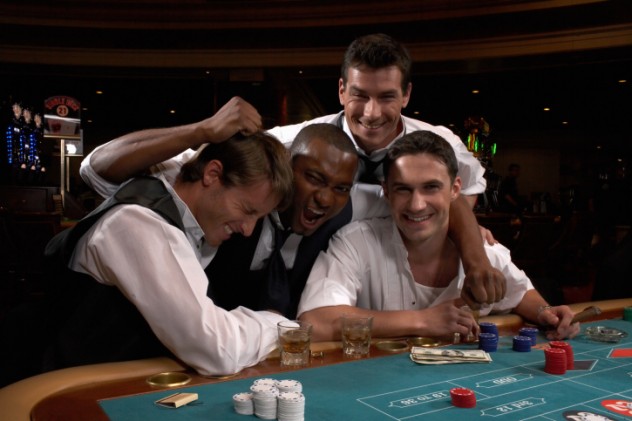
Las Vegas is the gambling capital of the world, with slot machines located in almost every supermarket and gas station in the city, so it may be surprising that gambling is strictly prohibited just 40 kilometers (25 miles) away from the Strip.
With its quiet streets and well-manicured lawns, Boulder City looks more like a small Midwestern town than the last stop before entering Vegas after crossing the Hoover Dam. The community was established by the federal government in 1931 for workers constructing the dam. Federal officials were understandably concerned that the construction workers’ paychecks would end up at local casinos rather than in their bank accounts, and so a gambling ban was instituted. When Boulder City was incorporated in 1960, the city council decided to maintain the gambling ban.
Even today, the suggestion of legalizing gambling in the city is met with staunch resistance by local residents, who prefer to shun the negative side-effects that come with gambling. Gaming and tourism are the lifeblood of Nevada’s economy, but it is refreshing to know that there is still a place for Vegas visitors and residents alike to get away from the glitz and glamour for a while.
6Oscar Goodman

Perhaps no one person epitomizes modern Las Vegas more than former mayor Oscar Goodman. Goodman got his start as a young criminal defense attorney taking on the cases of some of the city’s most notorious mobsters. After a decades-long legal career, Goodman beat out five opponents to become mayor in 1999.
Goodman presided over Las Vegas just as it was once again embracing its reputation as Sin City, leaving behind the brief fad to market itself as a family-friendly destination. And the city couldn’t have asked for a better spokesman than Goodman. He made a habit of attending public functions with two showgirls at his side while sipping a martini, and he dubbed himself “The Happiest Mayor in the Universe.” He outraged local parents during a question and answer session in front of a 4th grade class, when he responded that his favorite pastime was drinking gin. When called out for the impropriety of his response, Goodman said, “I can’t tell a lie. If they didn’t want the answer the kid shouldn’t have asked the question.” And when asked by a reporter how to handle the city’s graffiti problem, the mayor advocated cutting the thumbs off of any aspiring Banksys.
Besides making outrageous comments, Mayor Goodman brought about some actual policy changes, most notably the revitalization of downtown Las Vegas. The Downtown Project saw much of the dilapidated motels and high crime of the area replaced with high-rise condominiums and hipster-friendly bars, though like most urban renewal projects there was controversy over the displacement of the area’s low-income residents.
The law limits the office of mayor to three terms, so in 2011 the Happiest Mayor in America stepped down. But the city will still have a Mayor Goodman until at least 2015—Oscar’s wife Carolyn won the race to replace him, though she travels with Chippendale dancers instead of showgirls.
5MGM Fire
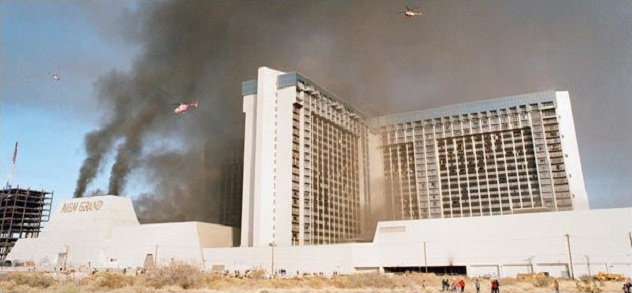
The mega-resorts lining the Strip are sprawling behemoths that contain thousands of guests at any given time. One of the chief safety concerns when constructing such large buildings is providing ways to prevent and control fires. But the first generation of Vegas casinos often lacked what are today considered essential fire safety features, such as water sprinklers throughout the entire building—and the result was tragic.
The county building inspector did not require the 23-story MGM Grand Hotel and Casino to have a sprinkler system on the first two floors, because they housed the casino and several restaurants, reasoning that any fire that broke out in the area would be quickly noticed and extinguished. This proved to be a fatal oversight when a faulty wire caused a fire to break out in a closed ground-floor restaurant during the early morning hours of November 21, 1980.
The fire quickly spread throughout the entire casino area, sending thick plumes of smoke billowing from the building. An estimated 5,000 people were in the MGM at the time of the fire, with many of them stranded on the upper floors. Some were desperate enough to try to climb down the building using ropes made of bed sheets. Eventually, military helicopters from nearby Nellis Air Force Base were deployed to rescue survivors trapped on the roof, ultimately airlifting 2,000 people to safety. Once the fire was extinguished, 85 people were dead and another 679 were injured.
The vast majority of deaths occurred in the upper floors of the MGM and were due to smoke inhalation, with only four deaths attributed to burns. The MGM fire is the third deadliest hotel fire in modern US history, and the terrible human toll led to a nationwide revision of fire code standards. The casino was eventually rebuilt and is today known as Bally’s Hotel and Casino.
4Howard Hughes’ Hotel Buying Spree
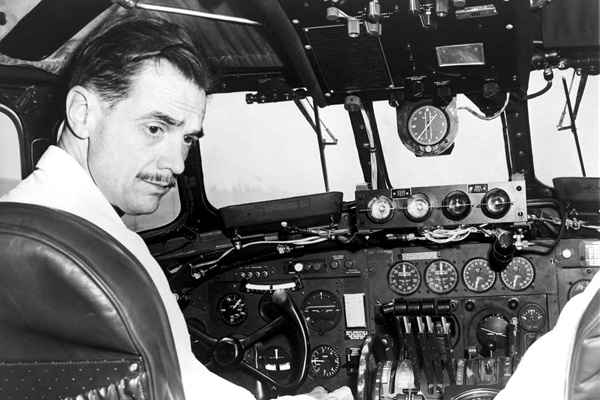
Howard Hughes’ biography reads like the Most Interesting Man in the World. Hughes made millions as a movie producer, aeronautic engineer, and real estate developer; dated movie stars; and set the record for fastest flight around the world. He was the man the CIA came to when they needed help raising a sunken Soviet submarine. He also had a lasting impact on the history of Las Vegas.
On November 27, 1966, Hughes arrived in Vegas by train and took up residence in the penthouse suite of the Desert Inn Hotel and Casino. After several months, and with no signs of him leaving, the management at the Desert Inn requested that Hughes vacate the premises. Hughes responded by buying the property. Then he went on a hotel buying spree, purchasing Castaways, the Landmark, New Frontier, the Sands, and the Silver Slipper. The Mafia was still active in Las Vegas at this time, but Hughes’ purchase of much of the Strip signaled the beginning of the end of mob control of the city. Over the coming decades the casinos founded by gangsters would be bought by legitimate corporate interests. In the end, Hughes was the first of the modern corporate casino moguls, like Steve Wynn and Sheldon Adelson, who would go on to erect the themed megaresorts that have come to define modern Las Vegas.
Despite the role Hughes played in shaping Vegas, it’s important to remember that he was also a control-freak who sought to use his power to advocate for atrocious policies like preventing school integration and outlawing rock concerts in the city. Eventually, the severe obsessive-compulsive disorder that plagued Hughes led him to remain secluded in his penthouse at the Desert Inn, where he rarely bathed and collected his bodily fluids in jars, until he finally died in 1976, weighing only 93 pounds.
3The Black Book
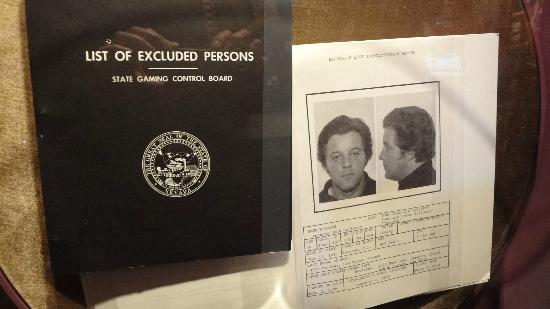
No, not that kind of black book. A state that has legalized gambling knows that it needs to keep up appearances if it doesn’t want to risk additional federal regulations. And in the early 60s public officials in Nevada were under intense federal pressure to curb the influence of organized crime in the operation of Las Vegas casinos. The response from the Nevada Gaming Control Board was a black leather-bound book where the names of people with a “notorious or unsavory reputation” would be placed. People who make it into the book are prohibited from owning, managing, or even entering a Nevada casino.
The Black Book (which is now actually a much less dramatic gray binder) has contained the names of some of the nation’s most famous mobsters. People make their way into the Black Book, formally known as the List of Excluded Persons, after a hearing before the Nevada Gaming Commission, where nominees can dispute their inclusion. But once a person’s name makes it into the book it is notoriously difficult to get it removed and the penalty for entering a casino is punishable by up to a year in jail.
Meanwhile, casinos that allow a banned person into their establishment risk losing their gaming license. And apparently no amount of celebrity status is able to help—even Frank Sinatra had to forfeit the gaming license for his northern Nevada casino after mob boss Sam Giancana visited the hotel. Today the Black Book contains 66 names, though the list now consists mainly of notorious card and slot cheats who the Gaming Commission wants to keep away from casinos.
2Atomic Tourism
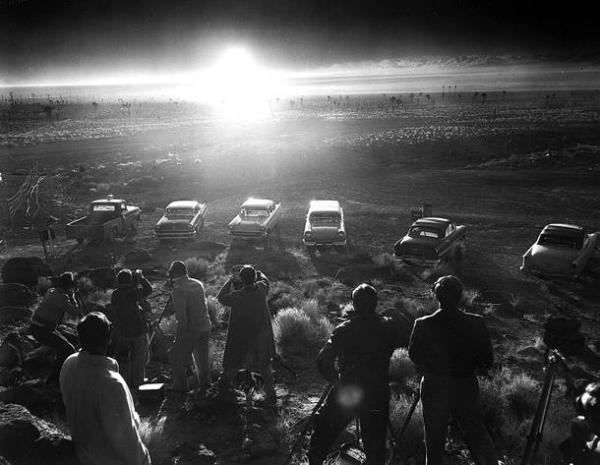
Nevada was not the birthplace of the atom bomb, but it is where the bomb grew up. About 100 kilometers (65 miles) north of Las Vegas is the Nevada Test Site, where over 100 above-ground nuclear tests were conducted between 1952 and 1962, when the Nuclear Test Ban Treaty was ratified. Las Vegas in the early 50s was home to several casinos, but did not yet draw tourists from every corner of the globe. But Las Vegans are an enterprising sort and seized upon the national attention given to the first atomic tests in an attempt to bring tourists to the city.
Overnight the concept of Atomic Tourism was born. Restaurants changed from western saloon décors to atomic themes. Showgirls began wearing their hair to resemble a mushroom cloud. And viewing parties were arranged on the roofs of casinos at night as the nuclear blasts created an artificial sun and shook the ground beneath the city. The tests were carefully timed in conjunction with local weather patterns so that the radioactive fallout kicked up by the bombs would drift away from Las Vegas. Unfortunately for central Nevada and southern Utah, the wind conditions that blew the fallout away from Vegas sent it their way instead. While it has never been officially proven that the tests had any negative health effects on the population of Las Vegas, it is estimated the fallout blown into central Nevada and Utah caused approximately 11,000 cancer deaths.
1The Mississippi Of The West

Most people today don’t associate Jim Crow, the series of laws mandating segregation that came about after the end of Reconstruction, with Las Vegas. But in the 1950s the city was known as “The Mississippi of the West” due to its harsh segregation laws.
In the 30s, when gambling was first legalized in Nevada, African-Americans worked in the small casinos lining downtown Las Vegas. But the city soon began to attract a large amount of gamblers from the South, who complained about the racially mixed atmosphere. And so the city council passed a series of laws that forced the African-American population to live on one side of the city, in West Las Vegas.
In contrast to the neon lights and cheap buffets of the Strip and downtown, most of West Las Vegas was lined with unpaved dirt roads, and many of its residents lived in tents and wooden shacks without running water. African-Americans were limited to working jobs in the kitchens, out of sight of any tourists. Even world-famous performers like Lena Horne and Nat King Cole had to come and go through the back entrance of casinos and stay at hotels in West Las Vegas.
A combination of factors caused the end of segregation. The first cracks in Jim Crow started in the late 1950’s when the Rat Pack, the lounge act headlined by Frank Sinatra, refused to continue to play at the Sands Casino unless Sammy Davis Jr. was allowed to stay in the hotel along with the rest of the group. Then, in 1960, the NAACP planned to hold a massive protest march down the Strip to highlight the city’s inequality. City officials feared the impact the march might have on the city’s vital tourism industry, so a meeting was convened between representatives of the city, casino owners, and civil rights leaders to address the NAACP’s grievances. At the conclusion of the meeting on March 25, 1960, an agreement was reached that ultimately ended residential segregation and permitted African-Americans to gamble and stay at local casinos. In return the NAACP called off the protest.
Anthony is a full-time attorney and part-time comedy writer. He resides in the vast urban sprawl outside of Las Vegas.



